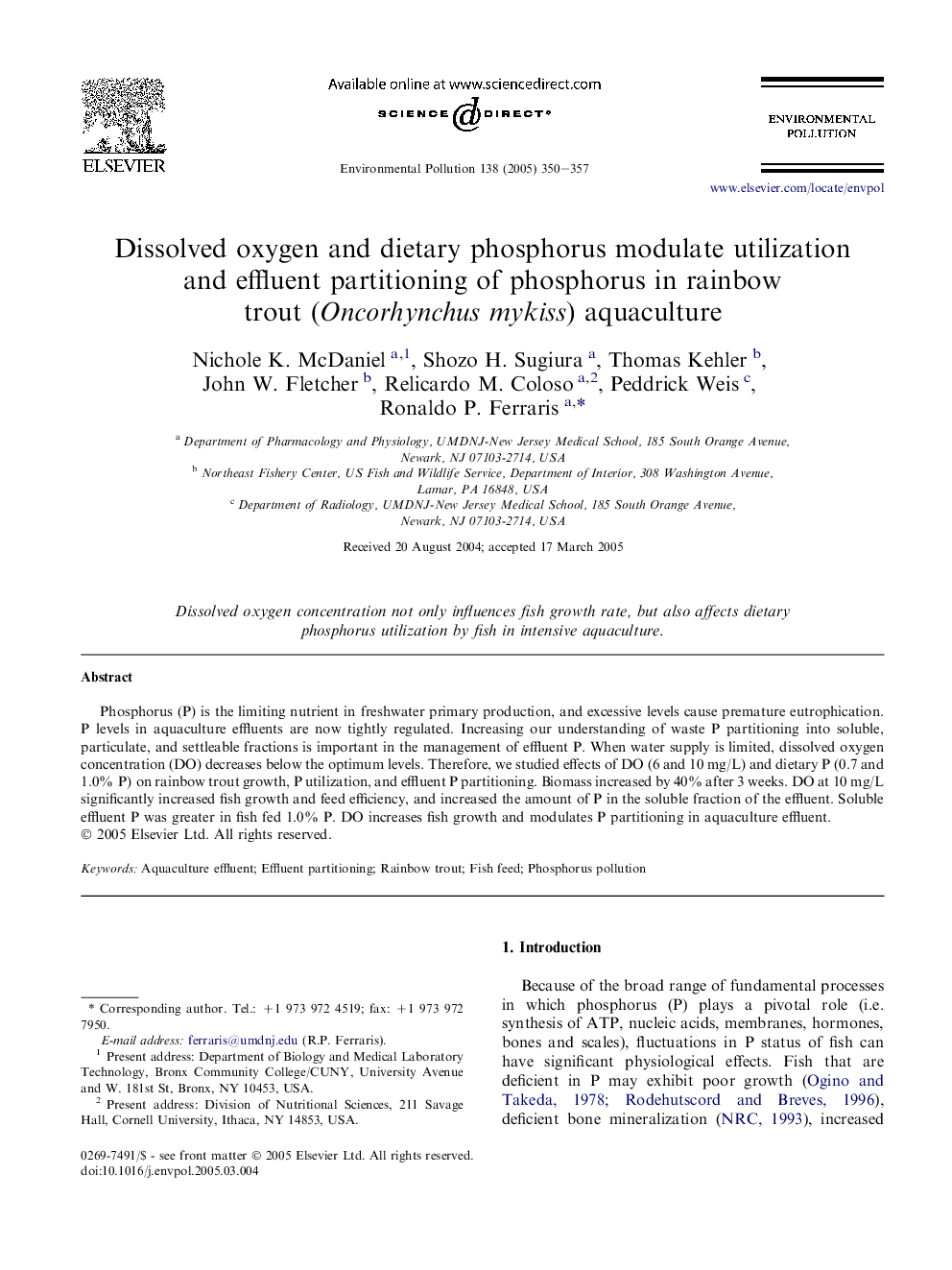| Article ID | Journal | Published Year | Pages | File Type |
|---|---|---|---|---|
| 9456157 | Environmental Pollution | 2005 | 8 Pages |
Abstract
Phosphorus (P) is the limiting nutrient in freshwater primary production, and excessive levels cause premature eutrophication. P levels in aquaculture effluents are now tightly regulated. Increasing our understanding of waste P partitioning into soluble, particulate, and settleable fractions is important in the management of effluent P. When water supply is limited, dissolved oxygen concentration (DO) decreases below the optimum levels. Therefore, we studied effects of DO (6 and 10Â mg/L) and dietary P (0.7 and 1.0% P) on rainbow trout growth, P utilization, and effluent P partitioning. Biomass increased by 40% after 3Â weeks. DO at 10Â mg/L significantly increased fish growth and feed efficiency, and increased the amount of P in the soluble fraction of the effluent. Soluble effluent P was greater in fish fed 1.0% P. DO increases fish growth and modulates P partitioning in aquaculture effluent.
Related Topics
Life Sciences
Environmental Science
Environmental Chemistry
Authors
Nichole K. McDaniel, Shozo H. Sugiura, Thomas Kehler, John W. Fletcher, Relicardo M. Coloso, Peddrick Weis, Ronaldo P. Ferraris,
